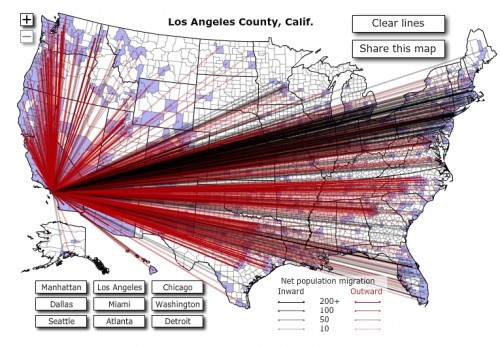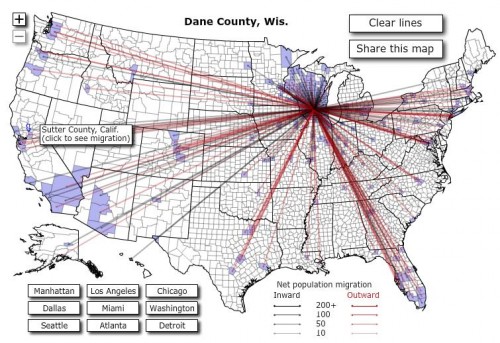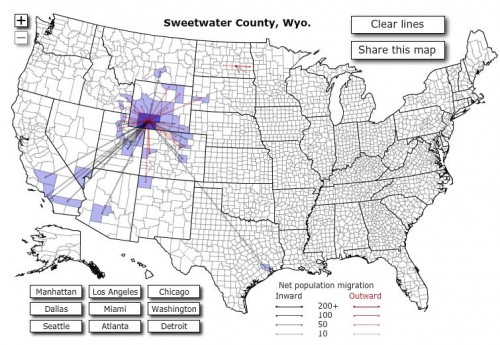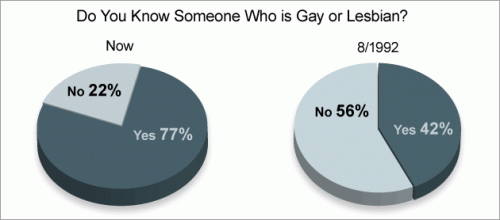
Neha M. sent us this fun little video that looks at women in beer commercials. Enjoy!
The Equal Justice Initiative just released a report about racial bias in jury selection, particularly in the South. I first heard about it on NPR. Racial discrimination in jury selection is illegal, but evidence suggests it’s still quite common, particularly through the use of peremptory challenges (the ability of attorneys to exclude a certain number of potential jurors without having to say why or justify it).
The results are striking; for instance, “…in Houston County, Alabama, 80% of African Americans qualified for jury service have been struck by prosecutors in death penalty cases” (p. 4 of the report).
Here’s a short video about one case:
The report doesn’t have as many informational images as I’d like, but here’s one showing the race of District Attorneys in several Southern states:
This video gives a historical overview, though it’s maybe not the most captivating description you’ll ever encounter:
And with that, dear readers, I’m off to court, as I got a jury summons and now must find out if I’ll end up on an actual jury. I’m taking lots of reading material.

Today we’ve got two examples of the sexual objectification of Black men.
Margaret M. sent us this commercial she recently saw on TV in Budapest. It’s for an ice cream bar called Maxi King, and I think it’s not stretching to say that the ice cream bar is a stand-in for the guy’s penis:
The placement of the container she takes it out of, her sexy look, the shot of the ice cream with the white center and the caramel goo…yeah, that’s a penis. And the commercial is playing on the stereotype that Black men are particularly well-endowed. Massive satisfaction!
In both cases, Black men’s sexuality is fetishized for White audiences. They represent a fantasy of exotic, hypersexual, and sexually-gifted Black men. While the stereotype could appear positive — after all, they’re presented as desirable sexual partners — the flip side is that Black men are thus also often presented as more animalistic and sexually aggressive than White men, a stereotype that has been used against them time and time again.
And as we see in the second commercial, representing a fantasy means you are interesting because of that fantasy, not because of who you are. When the man failed to live up to the woman’s fantasy, not only did she no longer find him attractive, she and her friend found the situation laughable…because you certainly wouldn’t want to sleep with, or even date, a Black man from Shropshire. If he’s not an exotic sexual fantasy, what’s the point?
UPDATE: Reader Carlo says,
I took the joke in the second commercial to be on the woman. She allowed her race based assessment of the man as an exotic other to make a fool of her when the man proved to be just like her (from somewhere local). Even though this commercial is obviously playing on recognized stereotypes (women find exotic men attractive), it sort of points out the ridiculousness of those assumptions. In the end, her friend is laughing at her for being, essentially, that daft white audience that equates blackness with the exotic.
For another take on fetishizing Black men, see our post on male sex workers in the Caribbean.
Gwen Sharp is an associate professor of sociology at Nevada State College. You can follow her on Twitter at @gwensharpnv.Cross-posted at Love Isn’t Enough.
Diego Costa sent in an image of Jaden Smith, star of the remake of The Karate Kid, at a recent promotional event in China. In it, 11-year-old Jaden has lifted his shirt to show off his abs, while co-star Jackie Chan and a man I presume is the event host marvel at them:
What struck Diego is how this image was received differently than a similar image of an 11-year-old girl pulling up her shirt to show off her abs might be seen. For instance, The Huffington Post showed the image without any comment about its content. We might compare that to the public outcry over the images of Miley Cyrus wrapped in a sheet that came out two years ago. I also suspect The Huffington Post article might say something about the adult men in the above photo if it were a girl rather than a boy they were touching/ogling.
Apparently when he went on The View, Jaden said he’s “already a great kisser” and the audience cheered, though I can’t find a video of it.
Diego says,
Why is the exposure of boy bodies deemed appropriate whilst the revealing of girls’ bodies must always accompany relentless probing, judging and outrage? If we agree that we shouldn’t sexualize children, then let’s not do it to any child. And, while we are at it, let’s also not assume infantile heterosexuality by asking if boys already have “a girlfriend.”
Excellent points. I suspect if an 11-year-old girl went on The View and said she was a good kisser already, she and her parents would be attacked in the press, people would express horror, and rumors would circulate about whether she’s been sexually abused, is already sexually active, etc. etc. But when an 11-year-old boy does it? That’s cute! He’s on his way to being a smooth-talking ladies’ man!
I can’t decide if, or to what degree, race might be at play here. There is certainly a tendency to adultify non-White children — that is, to treat them as mini-adults rather than children at much earlier ages than White kids are. This includes sexuality (for instance, teachers often assume Black girls are sexually active at younger ages than White girls). My recent post on the hypersexualization of a 13-year-old Latino boy discussed this topic.
But I’m not sure if that’s playing a major role here, or if gender assumptions and him being the son of a much-beloved celebrity couple are the more important factors. Thoughts?
For another example, see our post on the Rolling Stone cover with Taylor Lautner.

Mitchel Stein sent in a video a woman took of the “USA” section of the ethnic food aisle in a German grocery store. It’s an interesting look at what types of foods/brands are associated (at least in this store) with the U.S.:
I suspect that a lot of citizens of the U.S. wouldn’t necessarily think of those items if they tried to think of quintessentially American foods, much like foods defined as Chinese often aren’t found in China (e.g., the fortune cookie). It’s a good example of the social construction of national foods — that is, a set of food items become associated with a particular culture or nation, which may or may not align with the foods members of that culture most prefer or eat most frequently.
Also, apparently we in the U.S. are most associated with processed sweet/dessert items, and BBQ sauce.
Though I was super excited to see Head Country BBQ sauce, since it’s made in northern Oklahoma!
Tom Megginson of Change Marketing and Kandirra sent us a stunning example of the objectification of women in advertising. It’s a commercial for Rosgosstrakh, the largest insurance company in Russia, advertising their car insurance. How do they do so? By painting pictures of vehicles on (headless) women’s breasts and showing various hands fondling/smushing/jiggling them.
Reader lizardbreath pointed out that showing breasts on TV wouldn’t be as shocking in a lot of cultures as it would be in the U.S., which I think is a valid point. What makes it seem objectifying to both of us isn’t just the breasts themselves, but the headless women (so you have disembodied breasts). I also noticed that at one point a woman pushes the (also disembodied) male hands away, which implies she’s being groped when she doesn’t want to be.
Russian companies are on a roll. Here’s a commercial found at Copyranter for Avianova:
No phallic imagery there. Nosiree.
And for the Altay Tire Company (also from Copyranter):
Gwen Sharp is an associate professor of sociology at Nevada State College. You can follow her on Twitter at @gwensharpnv.Dimitriy T.M. sent in another interesting link, this time to an interactive map that presents IRS data on inter-county moves — that is, how many people moved from one county to another in 2008, and where they moved to. The map doesn’t capture all moves, since the IRS only presents data if at least 10 people from a county moved to a particular destination county (so a county could have a lot of out-migration, but if people really spread out when they moved, it wouldn’t show up). Despite that limitation, it does highlight some interesting general trends.
For instance, people from counties with big cities move to a variety of places, often far away from where they started (note that the width of the line indicates the number of immigrants, red = out-migration and black = in-migration, and the destination counties show up in blue):
On the other hand, if you look at most counties in the U.S. that don’t have large metropolitan areas, you see that most movement is to relatively nearby counties. Here’s an example from North Dakota:
I suspect that the number of migrants in rural areas is going to be under-represented, since their smaller overall populations may make it more likely that less than 10 people would move to any particular place, so that’s important to keep in mind.
Also not surprisingly, counties with universities see a lot of migration, both in and out, and to a wide variety of destinations. Here is Dane County, the site of the University of Wisconsin-Madison:
When I was looking around, I randomly clicked on Sweetwater County, Wyoming. I was surprised to see quite a bit of in-migration from distant counties:
I don’t know what’s going on there. There isn’t a university in the county. Does anyone know enough about Wyoming to have a guess?
UPDATE: Reader Caitlin says it’s related to oil production. Thanks for the info, Caitlin!
Anyway, it’s a sort of fun map to mess around with.
Dimitriy T.M. sent in a link to an article at CBS news about changing attitudes toward gays and lesbians. The poll found that the proportion of people who say they know someone who is gay or lesbian has increased dramatically since 1992:
This differs quite a lot by age, however:
It seems likely that the difference is a reflection of increased visibility of gays and lesbians in our culture, such that younger people know more people who openly describe themselves as gay. In general, knowing someone who is gay is correlated with more positive attitudes toward gays and lesbians.
Over time people have also become more accepting of gays and lesbians, though the number saying homosexual relations are wrong has increased slightly between 2009 and 2010 (from 41 to 43 percent).
Over half of Americans believe there should be legal protections to prevent discrimination against gays and lesbians.
The wording of questions seems to affect people’s reported attitudes, with people being slightly less tolerant when relationships are described as “homosexual” than when the term “same-sex” is used:
If younger people are more accepting of gays and lesbians than older generations, it seems that we can expect more increasingly positive attitudes over time, unless it turns out that people become less tolerant of gays and lesbians as they get older. Overall, the responses here seem to justify some optimism about increasing gay rights and decreasing discrimination.










